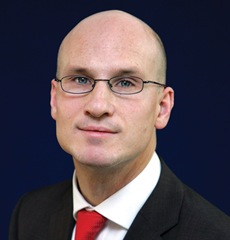Coping with population change
 ESRI research professor Richard Layte analyses how the increasing proportion of over 65s in the population, the higher life expectancy, higher number of births and inward migration will put pressure on the Irish healthcare system.
ESRI research professor Richard Layte analyses how the increasing proportion of over 65s in the population, the higher life expectancy, higher number of births and inward migration will put pressure on the Irish healthcare system.
Demographics
The size and make-up of the Irish population has changed in important ways over the last two decades and these trends look set to continue. Such ‘demographic’ trends have implications for almost all areas of Irish life but health and healthcare are particularly sensitive to the make-up of the population. As in most other affluent nations, life expectancy in Ireland has been increasing strongly in recent decades.
Figure 1 shows that there will be a large increase in the number of older people in Ireland in the coming decade. This will lead to the proportion of the population aged over 65 increasing from 11 per cent to 15.4 per cent. The number aged over 85 will increase from 1.1 per cent to 2.1 per cent which represents an absolute increase of 42,900 individuals.
This is to be celebrated and attests to real improvements in Irish society. Nonetheless, older people require both more health care, on average, than younger people and a different combination of services. Population ageing is not the only demographic challenge we face however. Relatively high numbers of births and recent inward migration in combination with improvements in life expectancy mean that Ireland simply has a significantly larger population and this will exert increasing pressure on Irish healthcare resources.
Figure 2 shows the level of overall population growth by 2021 depending on developments in migration (between 11 and 21 per cent). Effective planning for the consequences of these trends will be crucial in determining how successful we are in coping with the associated challenges. Unfortunately detailed data and analysis of the impact of population change on the healthcare system have not been available for Ireland until recently.
Implications
In October a report by a consortium of researchers from the ESRI and Trinity College Dublin and supported by the Health Research Board and the Health Service Executive was published. It examined these issues and looked at their implications for healthcare in Ireland. Based upon current patterns of healthcare use, the report showed that these demographic changes would imply:
• 5,214 more inpatient beds and 1,022 more day beds in Irish hospitals. This is a 54 per cent increase in inpatient beds and a 64 per cent increase in day beds between 2007 and 2020 or a total bed growth requirement of 4 per cent per annum.
• General practice consultations may increase by 32.5 per cent among those aged over 16 between 2006 and 2021, a figure that could rise to 48.2 per cent if projected changes in the health of the population are realised over the same period. This is over a period when the number of GP’s will be constrained by the number of GP retirements and changing work practices.
• Outpatient consultations may rise by 24.5 per cent overall on the basis of current patterns of use. If developments followed trends which occurred between 2001 to 2006 though, this would mean a proportionate increase in consultations by 2021 of 58 per cent over 2006. If population health trends continued, this would increase this requirement still further.
• Projections of public pharmaceutical prescribing to 2021 estimate that total ingredient costs will escalate to € 1.5 billion on basis of current prescribing patterns and € 2.4 billion if past trends from 1995-2006 prevail from € 1.06 billion in 2006. These are increases of 42 per cent and 126 per cent
• Our preferred projection of demand for residential long-term care for people aged 65 years and over in 2021 is 35,200 places or 35,820 including current unmet need. This suggests a requirement for an additional 13,324 long-term care places or a 59 per cent increase. This is 888 places per annum from 2007-2021 for people aged 65 years and over assuming an unchanged acute care system.
Recommendations
These projections show that even if national finances improve substantially, the current manner in which care is delivered will be unsustainable within any reasonable budget given the nature of demographic change. This demands a reconfiguration and intensification in the use of health care resources and improvements in levels of efficiency solutions.
Changes in the manner in which current resources are used and a reorganisation of services could moderate the extent of investment in services required. The report outlined a number of possible solutions including:
• A full implementation of the 2001 Primary Care Strategy. This would make better use of existing primary care resources and moderate the impact of population ageing and change in the supply of GPs. Similarly, more and better use could be made of other medical professionals, such as practice nurses and pharmacists.
• However, even with full implementation of the Primary Care Strategy, the number of GPs being trained in Ireland will need to increase to keep pace with demographic developments. Implementing stated government policy of training 150 a year would make a substantial difference but should healthcare policy focus on increasing use of primary care this number would need to increase further.
• Analysis shows that a substantial proportion of resources in Irish out patient care are expended on monitoring and maintaining chronic health conditions that could be just as successfully managed and much more cheaply managed in primary care. Making this transition however would require more resources in primary care.
• The HSE would like to decrease reliance on expensive acute hospitals by reducing patient average length of stay by better case management and greater use of day case and particularly day surgery. Although the varying complexity of the case load across hospitals can lead to differences in day case rates, the current variability would suggest that there is substantial potential to increase day rates across the Irish hospital system and in doing so significantly increase the level of efficiency.
• Average length of stay is also influenced by patient characteristics and older age and chronic illness in particular. Analysis suggests that the lack of step down services has a critical influence in reducing the efficiency of acute hospitals in Ireland, particularly voluntary hospitals whose patient load tends to be older and more likely to have disabling conditions.
Reform
As our discussion here shows, the inter-dependency of the healthcare system underlines the need to think about reform on a system-wide basis. A transition to a healthcare system focused more on care in the community than acute public hospitals would help the Irish healthcare system cope with population change, but this development would require substantial change in both primary and long-stay services as well as social care services if it is to be practicable and not lead to a severe degradation in the level and quality of service.
Professor Richard Layte is joint programme co-ordinator of health research at the ESRI.
An economic sociologist, he has worked at the ESRI since 1998.





